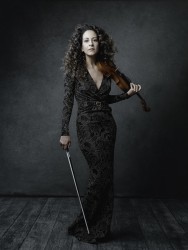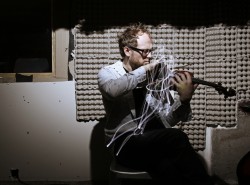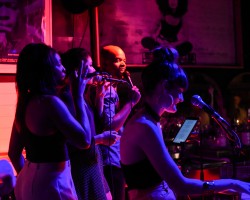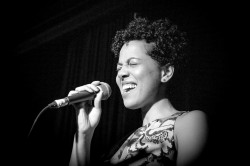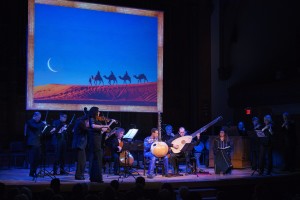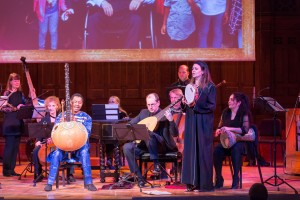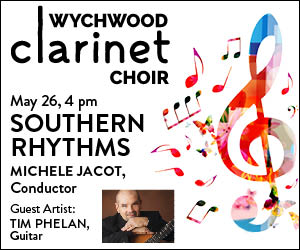Concert Report: Onstage, Come From Away feels rich and real
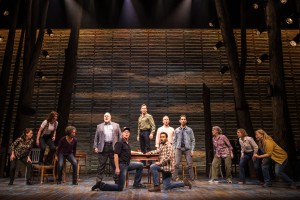 The new Canadian company of Come From Away officially opened its run at the Royal Alexandra Theatre on February 18, to cheers and an immediate, complete, and vociferous standing ovation. It rarely happens that a show coming into town with such high praise and raves from everywhere (including here in the fall of 2016) can meet the resulting high expectations. This show does and then some.
The new Canadian company of Come From Away officially opened its run at the Royal Alexandra Theatre on February 18, to cheers and an immediate, complete, and vociferous standing ovation. It rarely happens that a show coming into town with such high praise and raves from everywhere (including here in the fall of 2016) can meet the resulting high expectations. This show does and then some.
Come From Away is such an inspiring and intoxicating mix of music, story, character, direction, choreography and design that it seems to be an inevitable smash hit, so perfectly do all the elements interweave and mesh together. Add to that the fact that the story is Canadian, and true, and that it highlights the joys of generosity and compassion at a time of international tragedy, and the result is unbeatable. That is not to say that the darker and sadder aspects of the story are avoided – not at all. Rather, they are there in full force, which only makes the world onstage more complete and the joys and laughter that much more potent.
How has this phenomenon come to be? Many probably know by now that Come From Away is created from and based on the true story from 9/11 when 38 planes were forced to land at the airport in Gander, Newfoundland. The people of Gander opened their homes and hearts to the 7000 – 7000! – stranded passengers from around the world for five days, finding that by the last day – as the Mayor of Gander said from the stage of the Royal Alex today – they were saying goodbye to friends who felt like family.
The genius of the writing of the book and music is that it takes us there and puts us into the shoes of both the inhabitants of Gander and those unexpectedly stranded in this isolated place with at first no idea of why or for how long. From the opening song “Welcome to the Rock,” where we are introduced to the people of Gander and Newfoundland on the morning of 9/11, to “38 Planes,” as the events of the day unfold, to “Blankets and Bedding,” as the community rallies and everyone jumps in to help, we are swept along through the course of five days, words and music encompassing individual stories and the increasingly intersecting lives of hosts and guests. Brilliantly, the story does not end as the planes take off again, but takes us powerfully through the return of some of the passengers to New York and the renewed realization of tragedy, but also to a new sense of gratitude for the incredible interlude experienced on the edge of Newfoundland – and then to a reunion of Newfoundlanders and “Come From Aways,” 10 years later in Gander.
The journey we are taken on is rich and satisfying, buoyed on a tide of Celtic-based music, and yet the design and direction is deceptively simple – just two tables and 12 chairs on a revolve and 12 actors playing about 36 different characters, changing dialect and origin so swiftly and deftly that there is never any question of not believing wholly in who they are at any given moment. Christopher Ashley rightfully won the Best Director Tony Award for the Broadway production last spring.
This almost-all-Canadian cast is superb. I didn’t get to see the original production (like many, I couldn’t get a ticket) but I can’t imagine anyone being better than this group, and the accents to my critical ear sound completely authentic. Every character is essential, though three are the main anchors of the story: George Masswohl, with his strong, jovial presence, is at the centre as the Mayor of Gander; Lisa Horner exudes a welcoming warmth and electricity onstage as teacher Beulah, one of the leaders of the response team; and Eliza Jane Scott impresses with the authority and depth of feeling she gives American Airlines pilot Captain Beverley.
Everyone in the company impresses with their vocal and acting strength and versatility: Ali Momen switching from the rather unsympathetic half of gay couple Kevin and Kevin, to sympathetic Egyptian master chef Ali; Kevin Vidal as a New Yorker who goes through a real arc of discovery while in Gander (as well as playing the romantic airline pilot), Kristen Pierce as Bonnie of the SPCA, garnering our sympathy and laughs through her concern for the plight of the animals aboard the planes; Sacha Dennis with her heartbreaking song “I am Here”; Cory O’Brien as genial constable Oz; and Barbara Fulton as Diane, who unexpectedly finds romance.
So real do all the characters seem that it is a shock to walk outside the theatre and find oneself no longer in Gander. At the end of the opening performance we did have the added treat, though, of meeting the real people on whom the characters were based, as they joined the cast onstage. Performances continue through October at the Royal Alexandra Theatre.
Mirvish’s production of Come From Away, directed by Christopher Ashley (with book, music and lyrics by Irene Sankoff and David Hein), runs from February 18 to October 21 at the Royal Alexandra Theatre, Toronto.
Toronto-based “lifelong theatre person” Jennifer (Jenny) Parr works as a director, fight director, stage manager and coach, and is equally crazy about movies and musicals.


